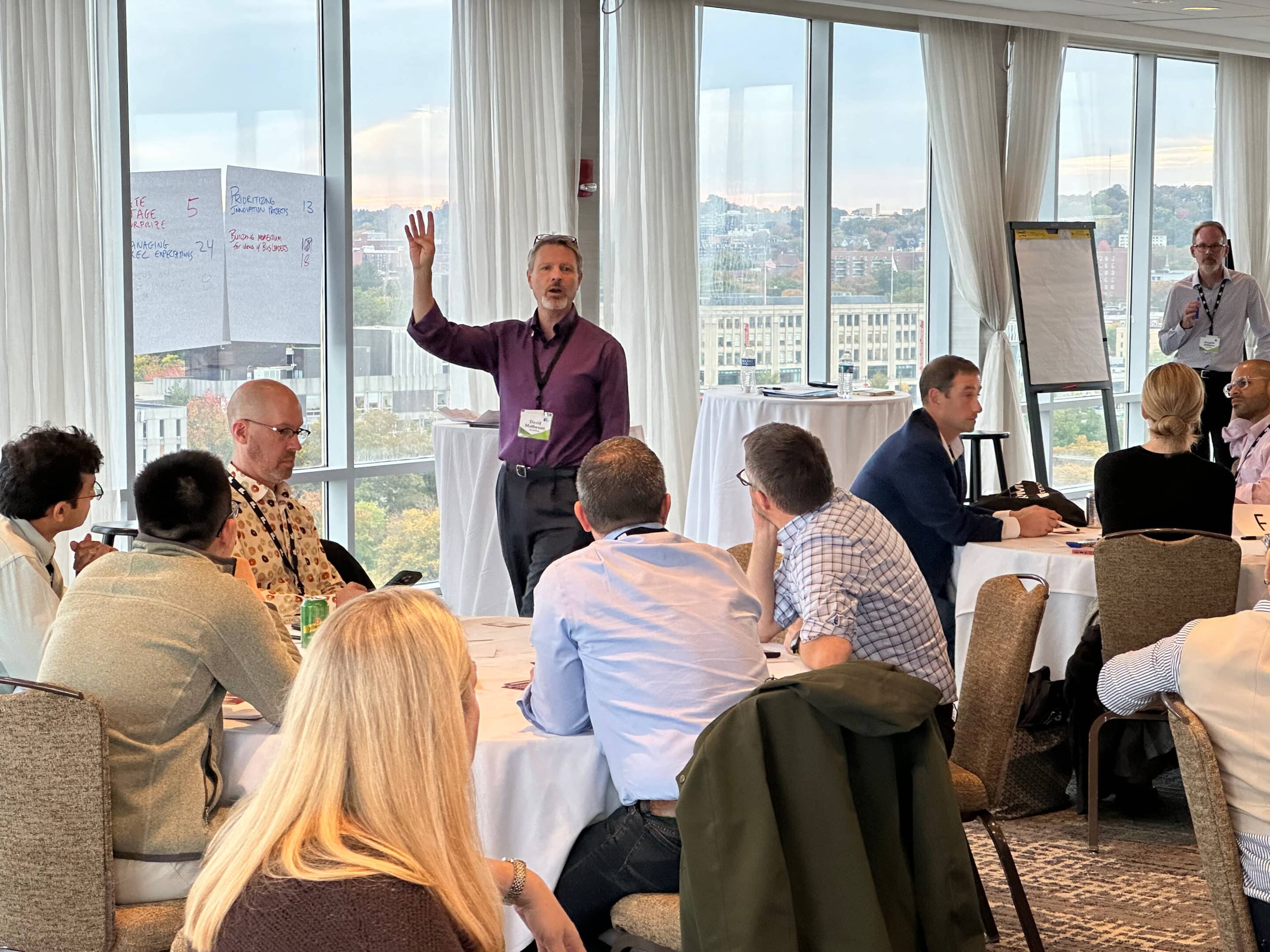The Ten Commandments for Turning Innovation Ignorance into Intelligence
By Doug Williams  7 min read
7 min read
You’ve been incubating your innovation for a year now and are heading into the final approval meeting to put serious money into the opportunity. As you enter the room, on your left sits the skeptical CFO, with her ever-present scowl firmly in place. You hope you’ve gathered enough intelligence about the opportunity to convince her. On your right is your business champion, who offers a nod and an unconvincing smile of encouragement. He supported this project even when you were ignorant about the opportunity and business case, and remains excited about the potential—but will he spend his political capital to get this approved? There were a few surprises along the way, so you may have to manage these leaders’ expectations a bit. Have you built enough momentum for your idea to get through the challenging questions you will be facing? Your champion’s weak smile suggests it may be your reputation on the line, not his.
Sound familiar?
How can you turn the ignorance surfaced in an early-stage project into the intelligence required to get the funding approval you will eventually seek?
My colleague, David Matheson, and I recently put this question to 80+ innovation practitioners in a workshop: How can you turn the ignorance surfaced in an early-stage project into the intelligence required to get the funding approval you will eventually seek?
The collective results from that workshop framed as commandments—“thou shalt” and “thou shalt not”—range from obvious practices to surprising insights. For example, perhaps you tend to resist engaging Finance for early projects because they corner you into committing to assumptions. It turns out it’s better to engage them early—see commandments IV and VI—but in a different way than you are probably used to.
But first let’s focus more deeply on what problems need to be solved during incubation to create intelligence. It’s natural to seek a path of progression on your milestones and get the work on the project done. But often “doing the work” doesn’t resolve the underlying questions linked to successful innovation—it creates an appearance of progress, which is very different from procuring intelligence.

Focus more deeply on what problems need to be solved during incubation to create intelligence.
We’ve identified five root causes for why these approval meetings are often so difficult:
Once our group of 80 in the workshop aligned on and prioritized these diagnostic issues, we worked through many case examples and drew out patterns that led to success and failure. These discussions were boiled down into the following Ten Commandments for Turning Innovation Ignorance into Intelligence:
I. Thou shalt use structured frameworks to identify issues affecting project success. It is essential that we identify the issues that will influence the success or failure of an innovation project. Using frameworks like Desirability/ Feasibility/ Viability will help you understand whether there is a market for the opportunity you are developing. The Strengths/ Weaknesses/ Opportunities/ Threats framework will help you find issues relating to whether your organization has a right to win. Other frameworks adopted within your organization can be used as well.
II. Thou shalt seek input from naysayers and skeptics to identify innovation blind spots. When sourcing issues that will influence your project, build a robust perspective by including both supporters AND detractors. Skeptics will be more apt to find speculative issues outside of the organization’s knowledge base. Addressing these issues head-on helps avoid late-stage surprises resulting from the project team all wearing rose-colored glasses.
III. Thou shalt understand the assumptions that must be true for an idea to be successful. Assumptions aren’t verboten— in fact, they’re a very necessary part of the innovation process because they are used to define your business case. But we don’t just place bets based on assumptions alone. Incubation is the time to run experiments to validate or disprove your assumptions, and help you understand when it’s time to punt, pivot, or persevere.
IV. Thou shalt speak the language of finance to build momentum for new ideas. The business case isn’t a “nice to have.” It’s a requirement for any innovation project because it allows you to communicate effectively with leaders about the potential opportunity you’re pursuing. The skeptical CFO needs to be convinced that the resources you seek are worth handing over, and that can only be done by speaking the language of finance.
V. Thou shalt not succumb to the temptation of under-promise/over-deliver. Making conservative estimates is a common default for the innovator—a form of self-preservation. Instead, sell the “dream” outcome while acknowledging that “nightmare” scenarios also exist. You want leaders who control the funding to see the financial potential of the project even if the outcome is uncertain.
VI. Thou shalt not commit to financial outcomes. When building the business case, document the assumptions linked to your best-case/worst-case scenarios, as well as your current best guess for how things will go. Defining these ranges for business case factors creates clear awareness of the upside potential while simultaneously acknowledging the downside risk of each assumption. Rather than focusing on a single outcome, you can excite leaders and unlock funding by pursuing experiments that have the potential to deliver the dream outcome.
VII. Thou shalt pursue learning plans that prioritize testing the most critical assumptions. A learning plan is a thoughtful collection of experiments designed to validate or disprove the assumptions that drive the business case outcomes. Resist the urge to work on the easy, familiar stuff to show forward progress, and instead devote resources to the most critical experiments first to develop intelligence in areas of relative uncertainty.
VIII. Thou shalt have pivot meetings instead of ‘status’ or ‘update’ meetings. Leaders don’t care about the work you did. They care about what you learned from that work, and how that influences what you are going to do next. Frame your meetings as pivot meetings to acknowledge the uncertain path upon which innovators trek and set expectations that adjustments to “the plan” are normal.
IX. Thou shalt de-risk, not deliver. If there isn’t any risk, it’s not really innovation, is it? Incubation is the time for identifying and reducing the risks through experimentation—activities that are firmly within the innovator’s wheelhouse. If enough risk is removed, then the project can advance to delivery—at which point it should be handed off to the business, as that is the type of work they are good at.
X. Thou shalt define and communicate key financial metrics aligned to the company culture and goals. Use metrics that inform stakeholders rather than those that track activity. Demonstrate that the financial investment in de-risking was money well spent. Show how results from the learning plan caused projects to pivot toward value or be killed early, thus avoiding costs that would have ultimately delivered no return. A portfolio view can also help show the evolution of the innovation opportunities and how they range in value and strategic importance.

Thanks to our colleagues at Innolead who provided the venue to do this work during their IMPACT 2023 conference in Boston and to our co-facilitators who helped make the workshop happen: Jeannine Walsh, Matthew Ewing, Troy Ness, Brian Anderson, Tyler Anderson, Daniel Bull, Michael Hauser, Kate Reichenbach, Alex Slawsby, and Paul Campbell. The event was engaging, fun and insightful (and we had a killer view)!